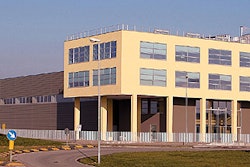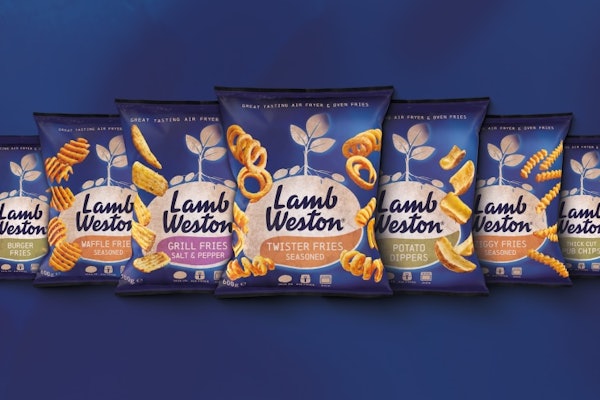
Group vice president of consumer products, John Lea, who oversees Tyson’s sales to retail and club stores, believes fixed-weight packaging offers revolutionary benefits for Tyson, for retailers, and for consumers.
“There are very few initiatives that come along that have so many advantages for the manufacturer, the retailer, and consumers,” says Lea. “I expect to see a fast progression of this concept across the retailer community, not just for poultry, but for many protein products.”
What’s special about this way of packaging is that the precise net weight of a pack’s contents is determined by the packer. Rather than filling pieces into a tray and pricing them according to the random weight, Tyson puts a predetermined weight in every pack.
Reduces confusion
This is a distinct departure from the traditional approach of random-weight packages where each is weighed and priced according to its weight. Fractional differences in weights equate to price differences of pennies at retail, which creates a confusing variety of packs.
The fixed-weight approach brings a variety of benefits, says Lea. For consumers, he points out, it means package-to-package and store-to-store-consistency. “Consumers receive a known portion cost on the product just as they would on frozen food or any product sold in net weight form. That way, every time they come to the store that package or price is not different solely based on its random weight.”
For Tyson and its retailers like Wal-Mart, the bar coded and scannable packs represent numerous benefits and enormous potential, says Lea. For example, shipments and product assortments can be tailored to the specific demographics of a particular location.
The secret: scannability
“The biggest efficiencies are gained through electronic supply chain initiatives that are served by typical bar coding of cases,” says Lea. “That means our ability to scan pallets and price accurately by case rather than by individual random package or ‘catchweight’.
“Before, we prepriced products for retailers at our plant. With scannable product, it’s possible to do regional pricing or individual store pricing down to the particular item number if the customer desires.”
Lea points out that it’s especially useful for sale items. “Before, when we prepriced sale product, we had to estimate the amount of product we thought the store would sell during the sale period. With this new approach, we can take existing product, put it on sale, and it is always in stock at the sale price during the sale dates. It’s very important for the retailer to be in stock on sale products when it’s in his ad. This will keep them from running out of product during the sale.”
Standardizing into three or less stock-keeping units per product--regular, family, and jumbo--gives Tyson greater control in category managment. “It was simply because we could not get that information from a nonscannable product before. We hope to work with our retailers on the proper product assortment by neighborhood demographics right down to the store level.” Lea compares it to what is already done in the nonfood aisles of grocery stores.
Tyson continues to offer random-weight packages for some customers, but feels this is the wave of the future. “It’s not being done currently for beef beyond ground beef, but we believe beef is within the realm of possibility for the future.”
$25 million investment
Fixed-weight packaging represents a hefty commitment by Tyson of $10 to $15 million per plant to convert some operations to fixed weight packaging. Tyson’s Noel, MO, plant was converted in early 2003 and its Monroe, NC, plant is expected to follow this fall, according to Lea.
“It’s a highly technical process that starts with weighing product out of the chiller at very early stages,” explains Lea. “Then we sort pieces for the exact weight for packages they are going into. Nothing like this has ever been done before in the chicken industry.”
Tyson worked in reverse order to determine the specific net weights.
“We focused in on keeping portion sizes consistent with what we packed before we converted to fixed weights, and we worked backwards into what actual weight a package would be,” Lea explains. That results in certain “odd” fixed weights such as a 1.65-lb pack of chicken breasts (shown).
Less handling, better packages
Another plus is that the chicken packs receive less handling in-plant and so are shipped in better condition. That means they look better on shelves, according to Lea.
With fixed weights, the products are packaged, then cased, and put in a cooler until shipped.
“The package doesn’t have to be handled again until an order placed and it’s pulled out for final shipment,” Lea points out. “By the time it gets to the store shelf, the package is much improved simply from lack of additional handling within our facility.”
The packs also present a neater appearance design-wise. For one thing, there’s no added sticker with the weight declaration to clutter the package; the weight is preprinted on the overwrap on the package front and the bar code appears on the back. And the use-by or freeze-by date and the product pricing presents a tidier appearance since it’s done by contact printing directly onto the film.
“This will be the way fresh [case-ready] products will be sold going forward,” claims Lea.
Tyson is the number one supplier of case-ready beef and pork to retail grocers. It is also the leader in the red meat and chicken categories with 27 percent of the beef market, 23 percent of the chicken market and 19 percent of the pork market. Tyson produces one out of every four pounds of protein in the United States.























